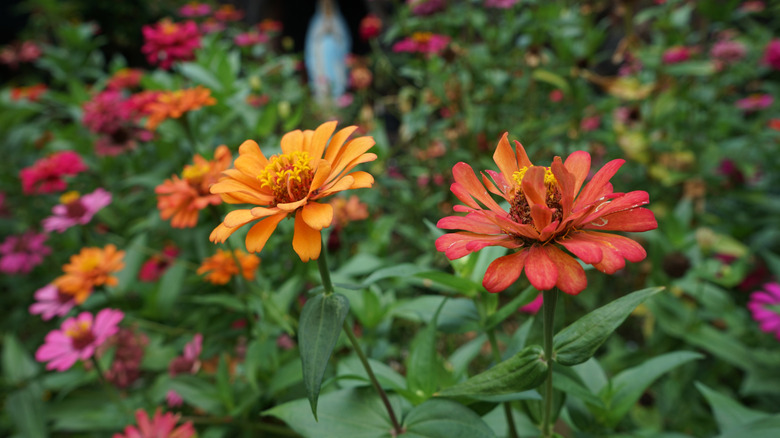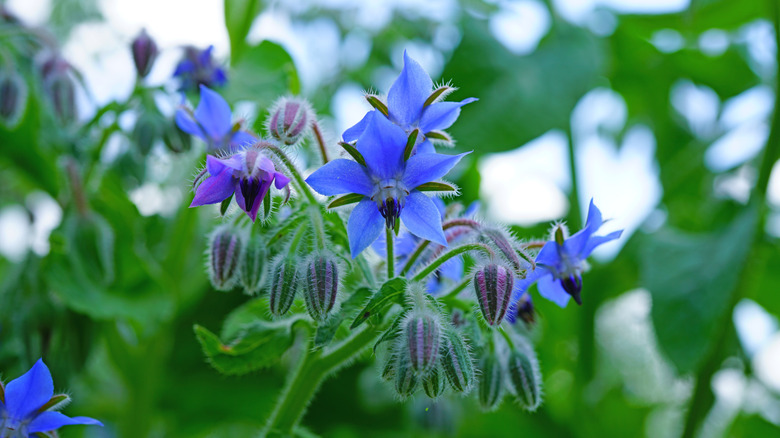The Easy-To-Grow Annual That Protects Zinnias From Pesky Garden Pests
For flower lovers, growing zinnias is one of the joys of gardening. Their gorgeous blooms brighten up any space, and they're excellent for cutting and bringing indoors to add an explosion of glorious color during the warmer months. If you've grown these beauties before, you'll be familiar with the the best time of year to plant zinnia seeds and how to do it. But, to help your zinnias thrive, you'll want to embrace companion planting. This will not only enhance the aesthetic of your flower patch, but many common companion plants also have numerous other benefits, allowing you to create a biodiverse environment that flourishes from year to year. In fact, there's one easy-to-grow annual you'll want to plant with your zinnias to protect your much-loved flowers from pesky garden pests: borage.
Borage (Borago officinalis) is a delightful Mediterranean herb that's easy to grow. It's been used for centuries by vegetable gardeners, as the pretty blue star-shaped flowers are filled with nectar to attract pollinators. It grows in USDA hardiness zones 2 through 11 and once you've planted it, it will self-seed easily. Apart from attracting bees, this herb will also lure other beneficial insects to your garden, such as predatory wasps and hoverflies. The larvae of these will help to control common pests like aphids and keep your zinnias well-protected from sap-sucking damage. As a bonus, borage is rabbit and deer-resistant, so planting it among your zinnias, which have similar resistance, might just make your yard a little more unattractive to these often unwanted visitors.
Planting and growing borage couldn't be easier
While there are plenty of benefits of planting borage in your edible garden, this herb does equally as well among your flowers. It can be grown from seeds with ease. To get started, you can simply scatter some seeds around where you've planted your zinnias and lightly cover them with ½ inch of soil. Like zinnias, these plants will grow happily in full sun or even part shade. Keep the soil moist until the seeds have germinated. After they're established, the plants can handle short periods of dryness. That's about all there is to growing this beneficial herb in the garden.
Like other plants you should have in your garden to naturally enrich the soil, borage has the ability to draw nutrients from deep down and utilize them to grow nice and lush. You can prolong flowering if you deadhead the old flowers so that new ones can grow. It's even possible to rejuvenate borage plants that have becomes a bit tattered-looking by cutting them back by half around the middle of summer. Finally, like zinnia petals, the borage flowers and young leaves are edible and have a mild cucumber taste.

